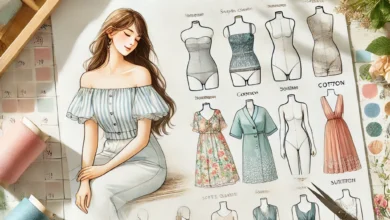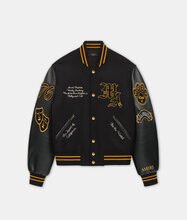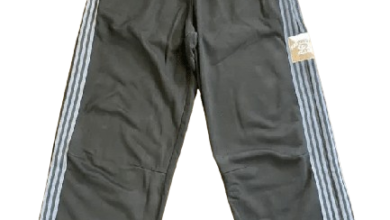Fashion design is an ever-evolving industry that blends creativity with business savvy. For those with a passion for style and an eye for design, it offers a variety of career paths. Whether you’re interested in clothing, footwear, accessories, or textiles, fashion design has many opportunities that cater to diverse interests. Here’s a comprehensive look at some exciting career options in fashion design, from apparel to accessories, and how to navigate the industry in 2024.
1. Apparel Design: Creating Wearable Art
Apparel design is perhaps the most recognized career in fashion. It involves creating clothing that not only looks good but also serves practical purposes. Apparel designers work on various categories, including casual wear, sportswear, formal wear, and high fashion.
Key Roles in Apparel Design:
- Ready-to-Wear Designers: Focus on creating collections for mass production, typically for department stores or fast fashion brands. Designers need to balance creativity with trends and consumer demands.
- Couture Designers: Couture design is high-end and bespoke, creating custom clothing for individual clients. It involves exquisite craftsmanship, unique designs, and the use of luxury fabrics.
- Costume Designers: Specialize in designing clothing for film, television, theater, and special events. Costume design involves creating garments that reflect character personalities, historical periods, and storytelling.
Skills Required: Sketching, fabric knowledge, pattern making, sewing, and trend forecasting are essential for apparel designers. Proficiency in design software like Adobe Illustrator or CLO 3D is becoming increasingly important in the digital age. Fashion Designing Classes in Pune
2. Footwear Design: Step into the World of Shoes
Footwear design is a niche within fashion design that focuses on creating stylish and functional shoes. This career requires knowledge of ergonomics, material science, and fashion trends, as well as a flair for innovation.
Key Roles in Footwear Design:
- Athletic Footwear Designers: Design shoes specifically for sports and physical activities. This requires an understanding of performance materials, foot structure, and athletic needs.
- Luxury Footwear Designers: Work with high-end brands to create stylish and often handcrafted shoes made from premium materials.
- Streetwear Footwear Designers: This is a growing segment that focuses on casual, trendy shoes that reflect urban culture. Sneakers and casual footwear are big markets in this sector.
Skills Required: Knowledge of materials, sketching, shoe construction, and familiarity with footwear manufacturing processes are crucial for success in this field.
3. Accessory Design: Elevating Every Outfit
Accessory design covers a wide range of products, from handbags to jewelry and scarves. Accessories often define an outfit’s personality, making this a critical aspect of the fashion industry.
Key Roles in Accessory Design:
- Handbag Designers: Design stylish and functional handbags, clutches, backpacks, and totes. This role requires an understanding of materials like leather, fabric, and hardware (zippers, buckles).
- Jewelry Designers: Create wearable art in the form of necklaces, rings, earrings, and bracelets. Jewelry design can range from costume pieces to fine jewelry made from precious metals and stones.
- Belt, Scarf, and Hat Designers: These designers focus on smaller, yet impactful accessories that complement clothing. Designing these pieces requires creativity and knowledge of trends in colors, textures, and materials.
Skills Required: Craftsmanship, material knowledge, trend forecasting, and attention to detail are critical for accessory designers. Familiarity with techniques like metalworking or leather crafting is also beneficial.
4. Textile Design: The Foundation of Fashion
Textile designers create patterns and fabrics used in clothing, accessories, and home décor. This career combines technical knowledge of fabric construction with a deep understanding of color, texture, and design trends.
Key Roles in Textile Design:
- Print Designers: Create patterns that are printed on fabrics, such as florals, geometrics, and abstract designs.
- Weave Designers: Focus on the structure of woven fabrics, determining the textures and patterns created by different weaving techniques.
- Embroidery Designers: Specialize in creating intricate, decorative stitch patterns that can be applied to clothing and accessories.
Skills Required: Strong drawing skills, knowledge of fabric properties, color theory, and proficiency in design software like CAD (Computer-Aided Design) are essential for textile designers.
5. Fashion Merchandising: The Business Side of Design
Fashion merchandising bridges the gap between creative design and business. Merchandisers ensure that the right products reach the right customers at the right time. While not strictly a design role, fashion merchandisers need a strong understanding of design trends to predict what will sell in the market. Fashion Designing Course in Pune
Key Roles in Fashion Merchandising:
- Retail Buyers: Work for fashion stores and brands to select products that will be sold to consumers. Buyers analyze trends and consumer behavior to make informed purchasing decisions.
- Product Developers: Collaborate with designers to bring new products to market. This role involves overseeing the production process, from concept to final product.
- Visual Merchandisers: Create visually appealing store displays and layouts that highlight fashion products, encouraging customers to make purchases.
Skills Required: Strong analytical skills, trend forecasting, an understanding of consumer behavior, and knowledge of fashion design are important for fashion merchandising roles.
6. Sustainable Fashion Design: Shaping the Future
Sustainable fashion design is a growing field as consumers become more eco-conscious. Designers in this sector focus on creating garments and accessories that minimize environmental impact through the use of eco-friendly materials, ethical production processes, and waste reduction.
Key Roles in Sustainable Fashion Design:
- Eco-Fashion Designers: Use organic, recycled, or sustainable materials to create clothing with a low environmental footprint.
- Circular Fashion Designers: Focus on designing products that can be reused, recycled, or composted at the end of their lifecycle.
- Slow Fashion Designers: Prioritize quality and longevity over fast production, often creating timeless pieces that withstand trends and wear.
Skills Required: A strong understanding of sustainable practices, materials sourcing, eco-friendly production, and design innovation are key for success in sustainable fashion design.
Conclusion
Fashion design offers an array of career paths, from apparel and footwear to accessories and textiles. Whether you’re drawn to creating statement clothing, crafting beautiful jewelry, or innovating with sustainable materials, the industry provides endless opportunities to turn your passion into a successful career. Aspiring designers should focus on honing their creative skills, staying informed about industry trends, and exploring different niches to find their ideal path in the fashion world.


